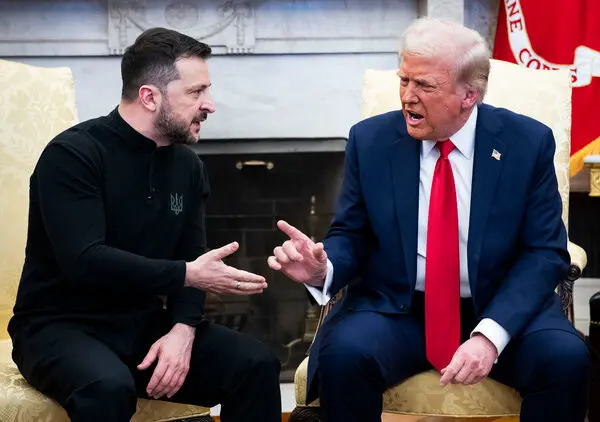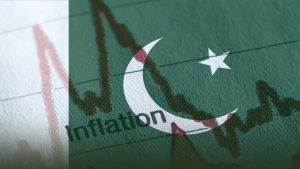In a pivotal moment for global diplomacy, the recent Trump Zelensky meeting at the White House has sparked renewed hope and cautious optimism for resolving the ongoing Ukraine conflict. Held amid escalating tensions, this gathering brought together Ukrainian President Volodymyr Zelensky, U.S. President Donald Trump, and several prominent European leaders to explore pathways toward peace. As the world watches closely, these talks highlight shifting dynamics in international relations, with potential implications for Eastern Europe’s stability and broader geopolitical strategies.
The Trump Zelensky meeting comes on the heels of Trump’s earlier summit with Russian President Vladimir Putin, which ended without a ceasefire agreement. Despite the absence of immediate breakthroughs, the discussions underscored critical elements of negotiation, from potential leader summits to security assurances. Below, we delve into the four major highlights that define this crucial encounter.
1. Prospects of a Direct Putin-Zelensky Dialogue Emerge
One of the most intriguing outcomes from the Trump Zelensky meeting was the suggestion of arranging a face-to-face discussion between Zelensky and Putin. Trump revealed that he had initiated a phone call with Putin to set the stage for bilateral talks, potentially followed by a trilateral session involving the United States.
READ MORE: Letitia James Under Fire
This development marks a significant shift, as previous attempts to facilitate such a high-level exchange have been rebuffed by Moscow. While Zelensky has long advocated for direct negotiations to demonstrate Russia’s commitment—or lack thereof—to peace, the Kremlin has historically dismissed the idea. Recent statements from Russian officials indicate a tentative openness to elevating dialogue levels, though challenges remain in bridging the deep-seated animosity since the 2022 invasion.
The Trump Zelensky meeting’s emphasis on this possibility reflects Trump’s proactive role in mediation, aiming to break the stalemate that has prolonged the Ukraine war.
2. Diverging Views on Ceasefire as a Negotiation Prerequisite
A notable point of contention during the Trump Zelensky meeting revolved around the necessity of a ceasefire before advancing peace talks. Trump expressed skepticism about its immediate requirement, suggesting that negotiations could proceed without halting hostilities outright. This stance contrasts with Ukraine’s longstanding position, which views a pause in fighting as essential for meaningful dialogue and a sustainable resolution.
European leaders, however, voiced stronger support for prioritizing a ceasefire. German Chancellor Friedrich Merz emphasized the improbability of productive meetings without one, urging collective pressure on Russia. Other attendees echoed this sentiment, highlighting the practical difficulties of forging a comprehensive peace deal amid ongoing aggression.
The Trump Zelensky meeting thus exposed these strategic differences, with Europeans advocating for de-escalation as a foundational step, while Trump’s approach leans toward flexible, deal-oriented diplomacy in the Ukraine conflict.
3. U.S. Signals Stronger Security Commitments to Ukraine
Security guarantees emerged as a cornerstone topic in the Trump Zelensky meeting, with Trump affirming U.S. involvement in safeguarding Ukraine under any prospective agreement. Although he stopped short of committing ground troops, Trump did not exclude the possibility of American military presence, positioning Europe as the primary defender while assuring robust U.S. support.
This represents Trump’s most explicit endorsement of protective measures yet, including references to advanced weaponry and economic aid. Zelensky elaborated on a substantial arms package valued at $90 billion, encompassing cutting-edge systems like aviation and anti-missile defenses, alongside U.S. procurement of Ukrainian drones to bolster local manufacturing.
The discussions at the Trump Zelensky meeting suggest that these assurances could materialize swiftly, potentially within days, reinforcing Ukraine’s defenses and deterring future threats in the region.
4. Zelensky’s Diplomatic Charm Offensive Wins Over Attendees
Shifting from past tensions, Zelensky adopted a markedly conciliatory tone during the Trump Zelensky meeting, expressing profound gratitude multiple times and presenting a polished, suit-clad appearance—a departure from his usual military attire. This strategic pivot addressed previous criticisms and fostered a warmer atmosphere.
Personal gestures, such as delivering a letter from Ukraine’s First Lady to Melania Trump, added a human touch to the proceedings. European counterparts complemented this by praising Trump’s leadership in convening the group, crediting him with catalyzing momentum toward peace despite prior Russian intransigence.
Yet, beneath the amicable exchanges, leaders conveyed the broader stakes, noting that Ukraine’s security is intertwined with Europe’s overall safety. The Trump Zelensky meeting, therefore, not only mended interpersonal dynamics but also unified voices on the urgency of collective action against aggression.
As the dust settles from the Trump Zelensky meeting, the absence of firm commitments leaves room for speculation on future progress. Nonetheless, these talks represent a critical juncture in the Ukraine peace process, blending optimism with the harsh realities of international conflict resolution. Stakeholders worldwide will be monitoring developments closely, hoping for tangible steps toward lasting stability.









